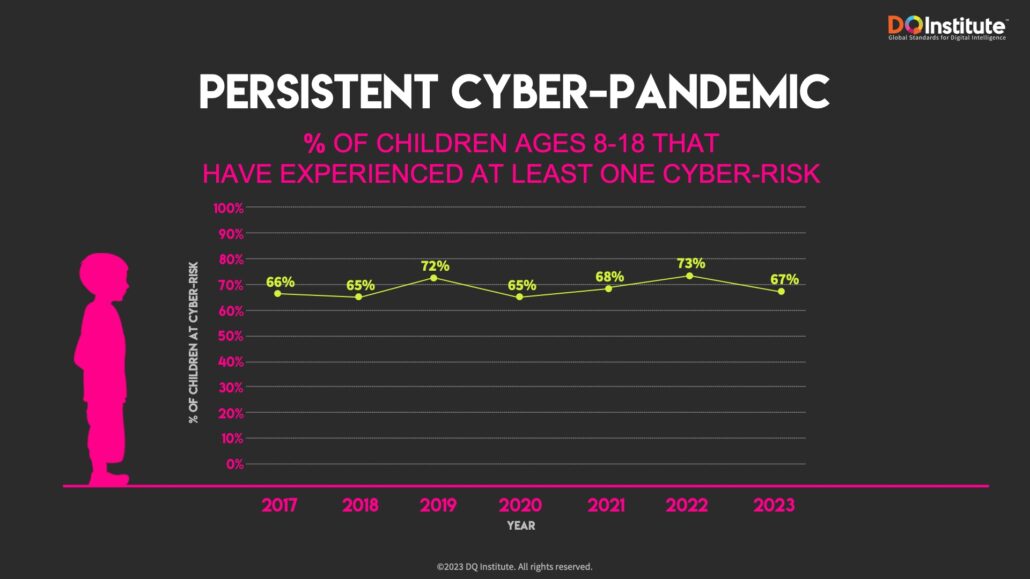Today’s Youth live a large part of their lives online; school, friends, hobbies, apps and platforms that collect and share personal data. That exposure creates a unique set of cybersecurity risks and responsibilities that parents, educators, and youth themselves must be aware of and treat with the same seriousness as physical safety and financial literacy.
Understanding Digital Footprint and Digital Responsibility
Your activity on the internet is your Digital Footprint. It is your unique set of traceable digital activities, actions, contributions and communications on the internet and various apps and platforms. Your digital footprint is persistent and largely permanent. Your posts, likes, comments and photos can all be archived, redistributed or indexed. Even if you delete posts, data or photos, copies may exist on servers or saved by others. That creates a lasting record of activity that can potentially impact your reputation, college admissions, job prospects and relationships for years to come.
Digital Responsibility is the ethical and safe use of technology and your accountability for your online actions and their impact on yourself and others. Respect your privacy and others. Don’t share private information about others without consent. Ask yourself if the information you are posting should be shared. If someone else were to post the information, would you want it to be shared? You can preserve the freedom of expression and connections without violating the privacy of friends, family, associations and organizations.
Cyber Risks Facing Today’s Youth
The internet can provide an endless quantity of resources for learning, entertainment and communication. However, a persistent high rate of exposure to internet risks is beginning to be marked as ‘cyber pandemic‘ for child safety online.
As with any other environment, there are potential dangers to be aware of:
- Cyberbullying is the use of electronic devices and online platforms to harass, threaten or embarrass others. It is repeated, negative behavior that includes posting hurtful comments, sharing embarrassing photos and videos, spreading rumors, lies, false and reputation damaging statements (Slander) or Doxing (sharing another’s private information).
- Exploitation via social engineering, grooming, and online predation. Youth are targets for manipulation through direct messages, friend requests, and deceptive profiles. “There are an estimated 500,000 online predators active each day. Children between the ages of 12 and 15 are especially susceptible to be groomed or manipulated by adults they meet online. According to the F.B.I., over 50 percent of the victims of online sexual exploitation are between the ages of 12 and 15.”
- Phishing and Smishing Scams use of urgent or tempting emails and text messages to trick people into clicking on malicious links or open malicious attachments. These types of scams can be random or appear to come from friends, family or organizations kids know. These tactics are used by scammers to obtain personal information they can exploit for financial gain.
- Identity Theft and Account Takeovers. Personal data shared publicly or obtained through phishing can be used to hijack social, school, or financial accounts. That data is used by scammers to open fraudulent accounts, obtain loans or make purchases for their financial gain. It leads to long-term credit, financial and reputational damage.

How Today’s Youth Can Be More Aware and Better Protected
Cybersecurity may not be a top concern for young people today, but statistics show that this generation reports higher victimization rates in social media account compromise, phishing, identity theft and cyberbullying.
These practices promote awareness, resilience, and proactive protection for kids and teens.
- Use Strong, Unique Passwords: Create unique passwords that are at least 15 characters long and use a mix of letters, numbers, and symbols. Avoid using common words or personal information such as names, birthdates, etc. Avoid using any information that can be found on social media pages.
- Reused passwords across services and various platforms make a single password compromise escalate into multiple account takeovers.
- Consider using a Passphrase. A Passphrase is a string of words or a full sentence that is used to create a long and strong password. You can use spaces, numbers and symbols for added complexity. Use something you will remember and not forget. Examples: “Pink and Purple Bunnies Love Poppies.” “I eat Pizza 7 days a week!” “I flew Ov3r the CooCoo N3st!”
- Enable Multi-Factor Authentication: Whenever possible, enable Multi-factor Authentication (MFA) on your accounts. MFA requires you to use a second and different factor to prove who you are besides just a password. The most common MFA is a code sent to your phone or a code you need to put into the website you are trying to access. MFA blocks most remote account takeover attempts even if a password is stolen. NEVER approve a MFA prompt you did not initiate it!
- Use a Password Manager: Password managers (like the Passwords app on iPhones) are great tools to store all your passwords and help you generate complex, hard-to-guess passwords. The only password you need to remember is your master password. Just remember to keep it long, add some complexity and enable MFA.
- Learn the Signs of Phishing and Social Engineering: Misspellings, urgent language, unexpected requests for credentials, and mismatched sender addresses are red flags.
- Do Not Click on Suspicious Links: If an email contains links, hover over them to see the actual URL. Understand URL structures so you know what doesn’t look right. If a link looks suspicious, do not click on it.
- Avoid Sharing Personally Identifiable Information (PII) in Public Posts and Profiles. Practice privacy-first posting: default to friends-only and tighten profiles.Limit app permissions and review privacy settings regularly. Only allow apps access to data they truly need.
- Block and Report on Social Media. Use built-in tools to report and block those profiles that harass and bully. If kids are using Social Media accounts, it is Crucial they know how and when to use these features with their respective platforms. “They call blocking and reporting the “first line of defense” against social media bullying or harassment.”
Final Comments
First and foremost, be actively involved in your children’s digital and day-to-day lives and communicate openly. There is a discrepancy between what today’s youth think they’d do in the above online dangers versus what they would actually do. This speaks to the fact that these cyber experiences can be so upsetting to kids that it makes it harder for them to make logical, safer decisions. It can not only affect their mental health, but it can potentially affect their future relationships and opportunities in life.
With the dramatic increase in online learning and use of digital platforms, it is essential that today’s youth understand what cybersecurity risks online exist, and how to mitigate those risks. Using best practices and practical habits—unique passwords, MFA, cautious sharing, and using blocking and reporting features— can provide protection to staying safe online. The challenge is to empower the next generation to navigate the digital world with confidence, knowledge, and respect for others. In doing so, we will ensure that today’s youth will grow up to be responsible digital citizens who are safe, responsible, and informed online.
Additional Resources for Cybersecurity and Today’s Youth
Government Resources: Visit websites of the Federal Trade Commission (FTC) and the Federal Bureau of Investigation (FBI) for tips and resources on protecting yourself from cyber threats.
Report Suspicious Activity: If you believe a tech support scam has targeted you, report it to the Federal Trade Commission (FTC) or your local consumer protection agency.
Teens and Cyberbullying 2022: https://www.pewresearch.org/internet/2022/12/15/teens-and-cyberbullying-2022/
National Cyber Security Alliance: https://www.staysafeonline.org/
Internet Safety for Kids: How to Protect Your Child from the Top 7 Dangers They Face Online https://usa.kaspersky.com/resource-center/threats/top-seven-dangers-children-face-online
Staying safe online is all about the proper knowledge and tools.
By taking small steps to protect your personal information and staying informed about cybersecurity threats, you can enjoy a safer online experience.
If this helped you or will help someone you know, please share this information with friends and family to help them stay protected.







